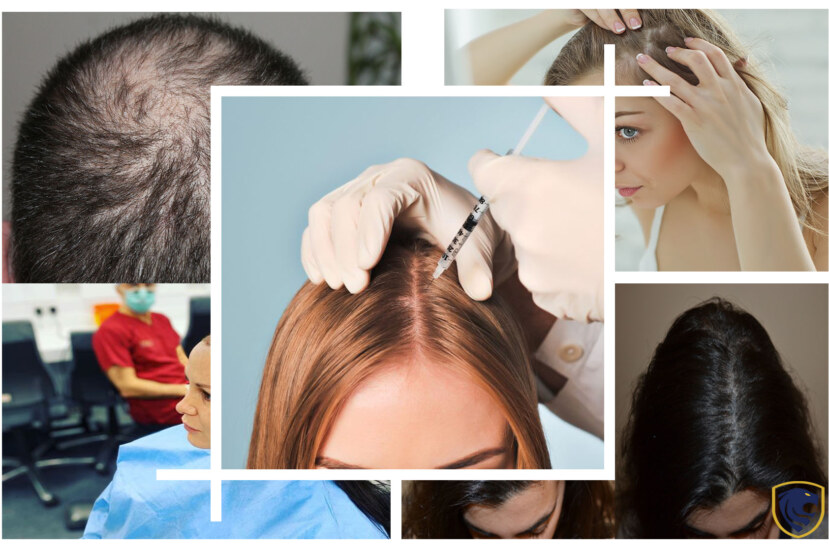Hair transplant side effects are one of the more common issues people often have when considering this procedure. But before making a decision, you should know some of the possible consequences that can occur. This article will outline some of these potential outcomes. And how they might affect you after your hairtransplant operation has been completed.

Frequent Need for Hair Loss Treatments
Hair transplantation can cause permanent hairloss, and the graft itself might not be able to produce enough hair for your needs. Some patients can even need hair transplants on a regular basis. This is usually because the transplantation procedures were unsuccessful. You will need another corrective procedure (another surgery) to rebuild your hairline or grow all-new hair on top of your scalp.
Infections
After any surgery, it’s important to follow the doctor’s directions and take care of yourself after your surgery. But hair transplantation requires the most attention and care after the surgery.
The reason is that even a minor infection can cause significant problems with your grafts. Therefore, they might not grow. Infections can occur for a number of reasons. But you will need to deal with these problems quickly and effectively for your grafts to survive and grow properly.
Hair Loss
If the person’s scalp does not heal properly after a hairtransplantation procedure or if there is scarring from developing infections, this could cause the person to lose their new hairgrowth in addition to any existing hair they had before they started the procedure. This is why it’s so important to take care of your procedure postoperatively.
Accepting a Larger Head
The final potential side effect of a hair transplant procedure is that the recipient is able to keep the natural hair they had before the procedure. But will now have a larger head size. In addition, their head will be rounder, and they may have deeper lines on their face as a result of having done the procedure.
Surgeons from all over the world come and do hair restoration and plastic surgery in Turkey.

Acute Rejection
While there is a low chance that you will experience this problem, it occurs when your body reacts to the graft and causes it to come out. This is most common with hair transplants that use follicular units from the back of the head.
Hair transplantation using Follicular Unit Transplantation (FUT) is a surgical procedure used to treat baldness in men and women suffering from genetic hair loss or alopecia.
A strip of healthy donor tissue containing hair follicles is surgically removed from the back of the scalp or other donor site.
Once the strip has been harvested, it is either implanted under the skin (usually in the area of your scalp) or placed beneath the skin in another area of your body. Then called follicular unit grafts or FUGs, these individual follicles are then united into groups that form a larger patch of hair. The most common placement sites are on top of the scalp (and sometimes on top of ears) and in the eyebrows. This type is also referred to as strip harvesting, follicular unit extraction (FUE), or strip transplantation. It is one of the most popular hairs restoration procedures. Because it can be used by men and women suffering from genetic baldness or alopecia. Because the hair grows from the follicles, not from whole hair shafts, it is also considered a true hairtransplant.
Though the grafts are shaped into F Shape grafts, they are spread out to resemble realistic hair growth patterns. They have been designed to look natural, and therefore many people find that this procedure produces the most natural results. This procedure works particularly well for people who have light or gray hair. As it is used to replace the scalp’s own sparse hairs with longer and denser hairs produced from planted grafts.

Hair transplant procedure
There are several advantages to using this procedure over other hair transplant methods
(1) There is no linear scar, which makes it ideal for people who need to wear their hair in a particular style, such as a military recruit.
If you have just lost a lot of hair in the previous weeks, the donor area will be less noticeable in a few months after it has healed. Follicular units also tend to grow much faster than whole scalp hairs and require less time for full growth. They can even be harvested from other parts of your body, such as the beard area. There are pros and cons to using this type of harvesting procedure. The disadvantage is that you will have stitches in your donor area for several weeks. The healing process takes longer than strip harvesting.
(2) Follicular units can be placed under the scalp for better concealment and growth patterns. This makes it possible to blend new hairpatterns with existing hairgrowth patterns.
(3) Follicular units are the only type of graft that is used for eyebrow, eyelash, and beard transplants. These hairs can also be used to camouflage scars or other skin irregularities. They are even popular with women who need to restore their eyebrows after having chemotherapy.

Hair Replacing
There are several types of follicular unit transplantation (FUT). The type that is usually done depends on factors such as the experience of the surgeon, your desired haircolor, and cost factors.
Hoamaaron HairTransplant Thrououhg Turkey provides us a wide range of services for patients who need quality results to get natural and healthy hair growth. We offer all the surgical treatments that are required to help you get your dream hair back, including:
It is important that you know what your options are before going ahead with any surgery. The surgeon will tell you how long it will take before you can resume normal activities. Most patients should be able to resume their daily activities after about two weeks after surgery. But could have some swelling or discomfort for up to six weeks afterward.
Read related articles: Make-Up Trending Styles In 2021



